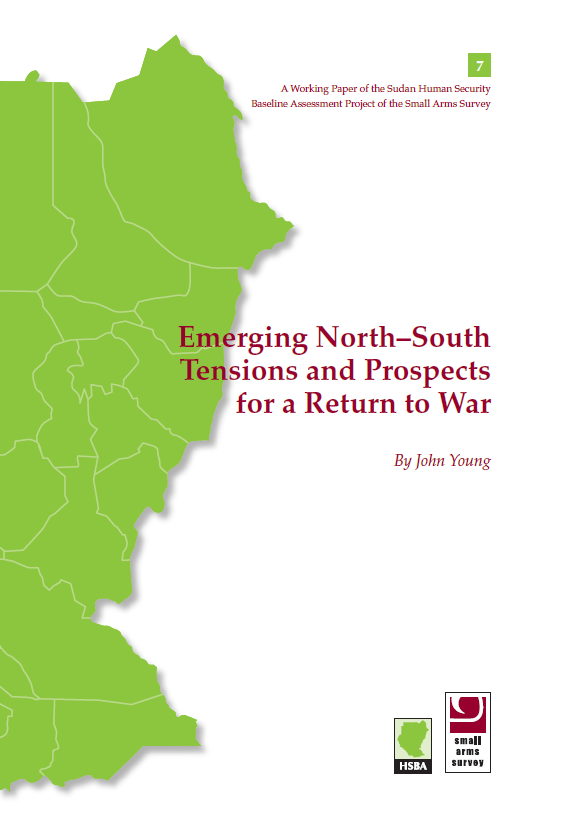
Emerging North–South Tensions and Prospects for a Return to War (HSBA Working Paper 7)
During celebrations commemorating the second anniversary of the signing of the Comprehensive Peace Agreement (CPA), Government of South Sudan (GoSS) President and Vice-President of the Republic Salva Kiir made clear that the agreement was facing a crisis and there was a growing risk of a return to war. In particular, he blamed Khartoum’s continuing support for Other Armed Groups (OAGs). In light of that assessment, Emerging North–South Tensions and Prospects for a Return to War reviews recent developments in the South Sudan security sector which suggest the possibility of a return to conflict between the North and South. The central thesis is that with security and political conditions in the South improving, attention will increasingly turn to North–South tensions, in particular along their shared border. The CPA calls for a border demarcation and a national census as a prelude to elections and a referendum on southern self-determination in 2011, which are far behind schedule and thus deepening the crisis and threatening to undermine the peace agreement. The border demarcation process is complicated by the refusal of the Government of Sudan (GoS) to accept the ruling of an international tribunal on the border of Abyei and the fact that the oil that provides most of the revenues for both Khartoum and Juba lies along the disputed border, including that of Abyei. The conduct of the census is also complicated by the same border and oil concerns. Moreover, trust has not developed between the leadership of the Sudan People’s Liberation Movement (SPLM) and the National Congress Party (NCP), neither during the negotiations preceding the signing of the CPA, nor in the period since, and in the absence of viable institutions to resolve outstanding conflicts, there is a danger that this may lead to a return to armed conflict.
Also available in ARABIC.
- More about the HSBA project
Have your say about Small Arms Survey publications and products: take 5 minutes to fill out our questionnaire.